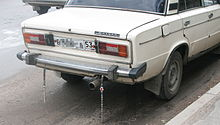- Nov 22, 2019
- 317
- 203
- 118
- If you're a qualified, trainee, or retired electrician - Which country is it that your work will be / is / was aimed at?
- United Kingdom
- What type of forum member are you?
- Other
- If other, please explain
- Electrician for live events and touring temporary systems
Hello,
As far as I can work out the Zappi car charger protects against PEN faults buy having a current sensing coil around the protective earth conductor and if a current is detected on the conductor it will disconnect the L, N and PE conductors.
just wondering how this meets the regs as in the regs it only mentions voltage monitoring devices for EV charging on PME
Also it would appear the Matt-e o-pen 3 phase verison useses 3 resistors in a wye / star configuration between the phases to give a virtual earth/star point then the voltage between the PME earth and the virtual earth is measured and if it is above 70v it disconnects the L, N & PE conductor after 4 seconds but before 5seconds.
it says in the regs that it needs to be a measurement between ture earth and the PME earth so how does this comply
Also this is the way i have worked out how both devices work, is this correct
thanks Marcus
As far as I can work out the Zappi car charger protects against PEN faults buy having a current sensing coil around the protective earth conductor and if a current is detected on the conductor it will disconnect the L, N and PE conductors.
just wondering how this meets the regs as in the regs it only mentions voltage monitoring devices for EV charging on PME
Also it would appear the Matt-e o-pen 3 phase verison useses 3 resistors in a wye / star configuration between the phases to give a virtual earth/star point then the voltage between the PME earth and the virtual earth is measured and if it is above 70v it disconnects the L, N & PE conductor after 4 seconds but before 5seconds.
it says in the regs that it needs to be a measurement between ture earth and the PME earth so how does this comply
Also this is the way i have worked out how both devices work, is this correct
thanks Marcus









